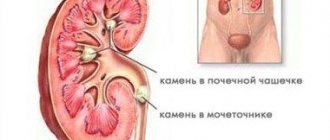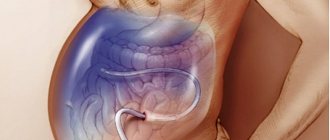Saturday, March 21, 2020
Many women, when they hear about gynecological operations, immediately panic, since surgical procedures are associated with the appearance of scars on the skin. Therefore, doctors recommend that you familiarize yourself with information about laparoscopy.
Laparoscopy in gynecology is one of the most modernized methods of operative surgery, thanks to which specialists perform operations without cutting all layers of the abdominal cavity. To get to the internal organs, surgeons make small punctures (up to 5-7 mm). That is why after laparoscopy the incisions heal quickly.
The surgical procedure involves inserting an instrument into the area of inflammation. The laparoscope is shaped like a tube that bends. She has a video camera and lenses. All data received by the video camera is displayed on the equipment monitor and magnified 40 times. Therefore, the doctor has the opportunity to conduct a detailed examination of the organs of the reproductive system and immediately identify problems.
Treatment can be carried out over several days, after which the patient immediately goes home.
Indications for the procedure in gynecology
The most common diseases that can be cured using a laparoscope are:
- endometriosis;
- obstruction of the uterine tubes;
- dysfunction of the reproductive organs;
- uterine fibroids;
- ovarian pathologies;
- inflammatory processes of the appendages;
- infertility;
- tumors, etc.
In addition to the listed diseases, such an operation in gynecology is indicated when identifying persistent pain in the pelvic area, before planning a pregnancy using IVF fertilization, before a biopsy of the uterus and ovaries, as well as to monitor the results of previous treatment.
When is laparoscopy done: on what day of the cycle?
It is not always possible to obtain highly effective results from laparoscopy in gynecology. This is due to the fact that doctors set the wrong date for the operation. Therefore, qualified specialists from the Neurologist clinic first calculate the specific date of the cycle and only after that prescribe the procedure.
It is important to know! Laparoscopia performed during menstruation can cause internal bleeding, inflammation and other complications.
Therefore, the most optimal time for surgery is after the ovulation period. Because after ovulation, the causes of infertility and other gynecological diseases can be identified.
Treatment of gynecological pathologies
In addition to visual examination and taking a biopsy for research, laparoscopy is also used to eliminate pathological processes in the reproductive system. For this purpose, new hardware technologies are used: • Laser destruction, laser vaporization - the use of a laser to remove pathological areas of affected organs (the “evaporation” effect); • Electrocoagulation is a method of cauterizing pathological areas with electric current; • Radio wave method is a non-contact method of cutting and coagulating soft tissues using high frequency radio waves • Ultrasound scalpel is a device for cutting and coagulating (cauterizing) tissues using ultrasound, with minimal thermal damage to tissues.
Their use minimizes the risk of complications and accelerates healing, as well as reduces blood loss during and after surgery.
After the procedure, the punctures are sutured or taped if their diameter is less than 5 mm.
Advice before the examination, preparation
Before performing diagnostic laparoscopy, specialists prescribe the patient to undergo general urine and blood tests. The doctor must collect all data regarding the patient’s health condition. The period of preparation for laparoscopy requires great responsibility from the patient and begins with diet. 7 days before the appointed date, it is necessary to exclude foods that affect gas formation from the daily diet:
- cabbage;
- milk;
- legumes;
- fruits (pear, plum, etc.).
Instead, it is recommended to prepare dishes from lean meat, eat boiled eggs, kefir, yogurt and cereals. 2 days after starting the diet, doctors prescribe activated charcoal. This approach allows you to improve the functioning of the digestive system.
The day before surgery, patients are prescribed liquid low-fat porridge or vegetable soups, chopped in a blender. Dinner is canceled as the procedure is performed in the morning on an empty stomach. In this case, the intestines and bladder should be empty. Sometimes patients are given an enema before going to bed.
Also, the preparatory process may include the following tests: ultrasound of the pelvic organs, cardiogram, fluorography, OBC. The patient must provide the doctor with his outpatient treatment card and also report the presence of chronic diseases. After analyzing the collected information, the anesthesiologist selects the type of anesthesia.
Preoperative preparation
| Stages | Name | Process |
| 1st | Premedication | 1 hour before surgery, the anesthesiologist administers medications to speed up the recovery process and improve the state of anesthesia. |
| 2nd | Catheter placement | Occurs in the operating room when prescribed drugs are administered intravenously to a patient. A specialist is monitoring his condition. All data on blood and the working condition of the heart is displayed on the monitor. |
| 3rd | Introduction of anesthesia | The first medications are administered to quickly fall asleep, and subsequent medications simplify the process of inserting the tube into the tracheal tract. As a result, the procedure is painless and effective. |
| 4th | Connection of tube and anesthesia machine | After they are completed, the operation begins. |
The manipulation takes on average 10 minutes.
Stages of laparoscopy
After completing the preparatory procedures, a small incision is made in the umbilical area. Next, doctors lift the abdominal wall and insert a Veress needle into the pelvic area. Carbon dioxide is injected through it in a volume of 3-4 liters. In this case, it is necessary to monitor the pressure (not higher than 14 mm) so that vasoconstriction does not occur.
The final stage of the operation in gynecology is the insertion of tubes, before which the needle is removed. After the puncture, the trocar is removed and the laparoscope is inserted through the tube. Due to the fact that it is equipped with a light indicator and a video camera, specialists can immediately see the condition of the internal pelvic area and prescribe treatment. Additionally, manipulation tools can be installed. The course of further treatment depends on the individual clinical picture.
What it is
Laparoscopy is a progressive technique in modern surgery. It is based on minor surgical intervention. Instead of a scalpel and abdominal incisions, two or three small incisions are made here on the anterior wall of the abdomen and special instruments are used - trocar manipulators and a laparoscope. Through one hole in the abdomen, the doctor inserts a small tube with a laparoscope, on which there is a video camera and a lighting device. Everything that the camera records is seen by the surgeon on the monitor. To improve access to internal organs, the peritoneal cavity is filled with carbon dioxide and then removed.
Modern technologies make it possible to equip a microcamera with digital matrices. Thanks to this, the image becomes as clear as possible, making diagnostics and other manipulations easier. All other instruments are manipulators, substitutes for conventional surgical devices.
Content:
- What it is
- When you need it
- Who performs this operation and where?
- Possible complications
- Recommendations after the procedure
- Additional questions
With their help, they move to the affected area, remove and suture organs, get rid of tumors, cysts, etc. The operation is performed under general anesthesia. After this, the holes in the abdominal cavity are sutured; as a rule, this requires two or three stitches. The patient can be discharged within a few hours if the condition allows.
Types of operations
Larascopy can be of several types. Diagnostic – carried out to identify a diagnosis and prescribe treatment. Planned – suitable in cases where one prepares for it and chooses a suitable clinic and specialist. In gynecology, many diseases have been identified that can be cured using laparoscopy.
- With endometriosis, a disease where endometrial tissue extends beyond the area of the uterus. As a result, inflammation occurs in the area of the disease, leading to the formation of adhesions and infertility.
- With an ovarian cyst - a benign tumor formed on the ovaries. They come in different types, which depend on the type of cells - epithelial, dermoid, endometriotic.
- With uterine fibroids - a benign formation on the walls of the uterus. Nodes can appear on different layers - in the middle (intramural), on the surface (subserous), on the inside (submucosal). Laparoscopy of the uterus is painless.
- For infertility, it is prescribed when drug treatment has not given a positive result.
Additional questions
My stomach is swollen after laparoscopy. What to do
During surgery, gas is injected into the peritoneal area for precise manipulation. After the invasion, it is pumped out, but there is a possibility that some will remain inside. This is not scary, it can be absorbed by tissues and excreted from the body. As a rule, this symptom goes away on its own after a few days and does not require intervention. To make you feel better, your doctor may prescribe sorbents and enzyme preparations. The main thing is to avoid self-medication.
Delayed menstruation after the procedure
Best materials of the month
- Coronaviruses: SARS-CoV-2 (COVID-19)
- Antibiotics for the prevention and treatment of COVID-19: how effective are they?
- The most common "office" diseases
- Does vodka kill coronavirus?
- How to stay alive on our roads?
In women, the cycle may shift after such manipulations. Menstruation is delayed for up to several weeks. If it does not occur within a month, you need to consult a gynecologist or your doctor.
Bleeding in women after laparoscopy
If a woman experiences bloody vaginal discharge, this is a reason to urgently call an ambulance. While help is on the way, you need to apply a cold compress to the lower abdomen and maintain bed rest.
When can you get pregnant after surgery?
You can plan to conceive only after the course of medication has ended. If surgery took place on the uterus, for example for fibroids, you will have to wait at least six months to become pregnant. Manipulations on other organs require 1.5-2 months. In any case, examination and permission from doctors will be required. Untimely pregnancy can lead to divergence of internal and external sutures, ectopic pregnancy, and loss of the child.
More fresh and relevant information about health on our Telegram channel. Subscribe: https://t.me/foodandhealthru
We will be grateful if you use the buttons:
Features of recovery after laparoscopy
After the operation has been performed, the patient is left in the hospital to regain consciousness. The most important recommendation from experts is movement no later than 4 hours after surgery. Physical activity in small quantities is useful for normalizing blood circulation.
In the normal course of the operation, the average recovery time is 3 days. After this, the patient returns home. But heavy physical activity is contraindicated for 2-3 weeks. It is recommended to carry out special gymnastics to strengthen the abdominal muscles.
Endoscopic surgery at GUTA CLINIC
Since 2001, GUTA CLINIC has its own surgical hospital, in which more than 90% of operations are performed using endoscopic techniques without incisions and the need for sutures.
Thanks to the use of endoscopic techniques
the average time a patient stays in hospital is no more than one and a half days, which is 5 times shorter than the standard time of stay after abdominal surgery.
Spectrum of endoscopic operations
performed in the surgical department of GUTA CLINIC is enormous:
- General surgery.
- Urology.
- Traumatology and orthopedics.
- Phlebology.
- Gynecology.
- Otorhinolaryngology.
- Proctology, etc.
In our work, we managed to combine the latest medical technologies, modern design and customer-oriented service. Experienced surgeons at GUTA CLINIC have undergone training in leading clinics in Europe and the USA.
Thanks to the use of ultrasound diagnostics (ultrasound) and surgical laser techniques during surgery, we achieve the highest efficiency and quality of treatment that meets the most stringent international standards.
Contraindications before laparoscopy
Not all patients at the clinic can undergo surgery. Laparoscopy is contraindicated for patients in the following cases:
- detection of inflammatory processes in the pelvic organs;
- state of shock;
- presence of bronchial asthma;
- anorexia;
- disruption of the respiratory system;
- hiatal hernia;
- pathologies of the nervous system, etc.
Possible consequences
The likelihood of complications with minimally invasive interventions is extremely low - 1-3 per 1000 cases. The risk group consists of women with a high body mass index, concomitant diseases, and a history of surgery on the pelvic organs.
Most often, intervention leads to the following consequences:
- allergic reaction to painkillers;
- re-development of the underlying disease;
- damage to nearby organs;
- bleeding;
- thromboembolism.
During the recovery period, infection and poor healing of wounds, divergence of postoperative sutures are possible. To minimize the likelihood of complications, you need to strictly follow your doctor’s recommendations. In Moscow, in paid clinics, such a minimally invasive intervention for diagnostic purposes can be done for 40,000 - 60,000 rubles. As complexity increases, the cost increases.
What are the complications after laparoscopy?
Often, complications after this procedure rarely occur, since defects can be identified in the first stages of the examination. Complications may occur after insertion of the tube and trocars:
- sudden bleeding;
- damage to the outer lining of the intestine;
- emphysema.
Also, sometimes adhesions can form, which lead to infertility and disruption of the gastrointestinal tract. This is due to minor damage to blood vessels. If doctors are inexperienced, hernias and hematomas can form.









